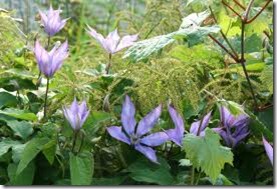Several hundred species of clematis plants, also known as virgin’s bower, grow around the world. These vines may be found as native vines, incorporated into landscaping or treated as houseplants. With their close proximity to animals and young children, their toxicity level may be a concern.
Toxicity
-
All parts of the clematis plant carry a toxin known as anemonin, or irritant glycoside. Clematis vines prove toxic to humans, cats, dogs and horses. Toxic reactions occur when the plant is eaten, inhaled or touched.
Symptoms
-
When rubbed, clematis plants cause dermatitis in some people, a serious rash characterized by redness and burning. People or animals that ingest clematis experience burning within their mouths in addition to mouth ulcers. This might be accompanied by nausea, vomiting and diarrhea, particularly in pets.
Treatment
-
Symptoms of clematis poison typically fade within a few minutes, according to North Carolina State University’s Poisonous Plants database. If a large amount of clematis has been ingested, or if the symptoms don’t subside, call Poison Control for advice.


Deprecated: strpos(): Passing null to parameter #1 ($haystack) of type string is deprecated in /home/agriviek8Qv/agriviet.net/public_html/wp-includes/comment-template.php on line 2522